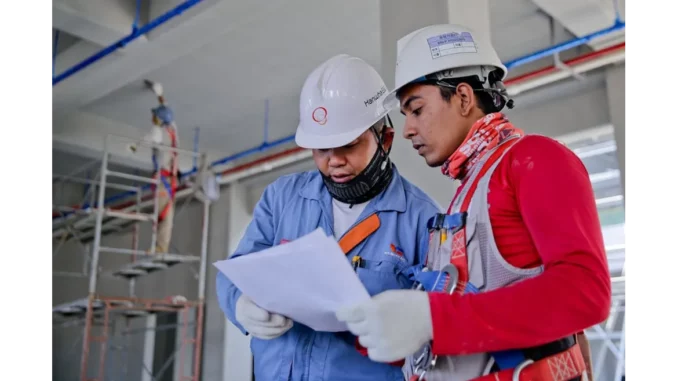
In an era where environmental sustainability has become a paramount concern, the unveiling of the UK Net Zero Carbon Buildings Standard 2024 signifies a transformative moment for the construction industry. For years, the concept of a “net zero carbon building” has been fraught with ambiguity, lacking a universally accepted definition. This situation is poised to change with the advent of a new pilot standard, promising to harmonise the industry’s approach to mitigating carbon emissions. I recently had the privilege of engaging with Sarah Thompson, a seasoned sustainability consultant instrumental in this standard’s development, to explore the implications for the sector.
Successful low-energy building design hinges on careful planning. Focus360 Energy can help.
Sarah Thompson’s involvement with the Net Zero Carbon Buildings Standard commenced in early 2022, during its initial conceptualisation. “From the beginning, it was apparent that a comprehensive framework was essential,” she explained. “There was considerable disunity in how net zero targets were interpreted, with diverse stakeholders adopting varied approaches. This standard is revolutionary because it aligns everyone towards a common goal.”
This standard’s distinctiveness lies in its collaborative formulation, engaging thousands of industry stakeholders, including developers, local authorities, and consultants. It is a synthesis of scientific rigour and practical insights from those on the frontline of its implementation. “We engaged closely with a broad spectrum of stakeholders,” Sarah remarked. “Our aim was to ensure the standard is not only scientifically robust but also applicable across various building types—from commercial and residential to healthcare and education.”
A major challenge the standard seeks to address is the precise measurement of both embodied and operational carbon emissions. “The standard imposes explicit limits on these emissions, tailored to building type and function,” Sarah highlighted. “This specificity is vital as it provides a concrete target for project teams to pursue.” The stipulation for buildings to verify compliance only after a 12-month period of operational energy use underscores the standard’s focus on sustained improvement rather than being a mere formality.
The pilot phase of the standard presents a compelling opportunity for industry-wide evaluation. “At this stage, it’s a living document,” Sarah emphasised. “Input from pilot projects will be instrumental in refining the final version anticipated in 2025. The intention is to develop a standard that is robust yet adaptable to future innovations and shifts within the industry.”
One of the hallmark features of the standard is its dynamic nature, with compliance thresholds becoming progressively stringent to drive further reductions in embodied carbon. “This forward-thinking approach is crucial,” Sarah explained. “While we have made notable progress in operational efficiency, embodied carbon offers a significant area for improvement. The standard embodies a commitment to continuous advancement, which is essential in combating climate change.”
Reflecting on the broader impact of the standard, Sarah expressed optimism. “It transcends mere compliance; it establishes a new benchmark,” she asserted. “There are commercial incentives as well—energy-efficient, sustainable buildings are increasingly attractive to investors and tenants. The financial advantages, from tax incentives to potentially enhanced property values, present a compelling argument for adoption.”
Sarah also underscored the importance of integrating the standard into existing workflows. “Proactive adoption is critical,” she advised. “Incorporating these metrics from the project’s inception and maintaining meticulous records will be vital for verification. The goal is to embed sustainability into the project’s core, from design through to operation.”
The introduction of the UK Net Zero Carbon Buildings Standard serves as a decisive call to action for the construction sector. While challenges persist, especially concerning the retrospective 12-month reporting requirement, the potential benefits are substantial. As Sarah concluded, “It’s a stride towards mainstreaming sustainability in construction. Broad industry engagement is essential to realise its transformative potential.”
The journey towards achieving net zero carbon buildings has taken a momentous leap forward. With a unified definition now established, the industry can collectively strive towards a more sustainable future. As Sarah Thompson and her team continue their efforts, the aspiration is that this standard will not only guide but also inspire innovation and accountability in the built environment.


Be the first to comment